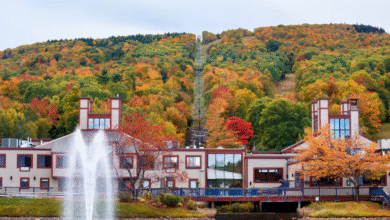Letra de Jarkko Ahola Ave Maria: Lyrics, Meaning, and More

Imagine hearing a powerful voice breathe new life into a timeless classic. That’s exactly what Finnish singer Jarkko Ahola does with his rendition of “Ave Maria.” If you’re here searching for the lyrics or “letra” of Jarkko Ahola’s “Ave Maria,” you’re in for a treat. This article will not only give you the lyrics but also take you on a journey through the song’s history, its meaning, and why Ahola’s version stands out. Whether you’re a fan of Finnish music, a lover of classical songs, or just curious, let’s explore this beautiful piece together.
Introduction
Jarkko Ahola isn’t just any singer he’s a Finnish powerhouse known for his incredible vocal range and emotional performances. His take on “Ave Maria,” a prayer-turned-musical-masterpiece, has caught the attention of fans worldwide. But what makes his version special? And what are the lyrics that have people searching for “letra de Jarkko Ahola Ave Maria“? In this article, we’ll uncover the story behind the song, share the lyrics, and dive into its significance. Ready? Let’s get started!
About Jarkko Ahola
Who Is Jarkko Ahola?
Jarkko Ahola is a name that resonates deeply in the Finnish music scene. Born on August 24, 1977, in Toijala, Finland, he first gained fame as the lead singer of the heavy metal band Teräsbetoni. With his booming voice and charismatic stage presence, he helped the band rise to prominence, even representing Finland at the Eurovision Song Contest in 2008 with their song “Missä miehet ratsastaa.”
But Ahola’s talents go far beyond metal. After leaving Teräsbetoni in 2011, he embarked on a solo career that showcased his versatility. From rock to pop to classical influences, Ahola has proven he can tackle any genre with ease. His version of “Ave Maria” is a testament to this adaptability, blending his powerful vocals with a song steeped in tradition.
Musical Style and Influences
Ahola’s music is a melting pot of influences. His heavy metal roots give his voice a raw, commanding edge, while his solo work reveals a softer, more melodic side. Fans often describe his singing as “soul-stirring” and “larger than life.” When it comes to “Ave Maria,” Ahola brings a unique blend of reverence and intensity, making it a standout in his discography.
The History of Ave Maria
Origins of the Ave Maria Prayer
Before we get to Ahola’s version, let’s rewind to the roots of “Ave Maria.” The phrase itself comes from a traditional Catholic prayer, also known as the “Hail Mary.” It’s a plea for the Virgin Mary’s intercession, and its words have inspired countless musicians over the centuries. The prayer’s Latin text begins with “Ave Maria, gratia plena,” meaning “Hail Mary, full of grace.”
Musical Adaptations of Ave Maria
The “Ave Maria” prayer has been set to music by some of the greatest composers in history. Two of the most famous versions are:
-
Franz Schubert (1825): This is the one most people think of when they hear “Ave Maria.” Originally composed as part of his song cycle based on Sir Walter Scott’s poem “The Lady of the Lake,” Schubert’s melody was later adapted to fit the Latin prayer.
-
Charles Gounod (1859): Gounod took Johann Sebastian Bach’s “Prelude No. 1 in C Major” and layered a new melody over it, creating a hauntingly beautiful “Ave Maria.”
These versions paved the way for countless interpretations, from opera singers to pop artists. And that brings us to Jarkko Ahola’s contribution to this storied legacy.
Jarkko Ahola’s Ave Maria
Album and Release Details
Jarkko Ahola released his version of “Ave Maria” on his 2012 solo album Ave Maria – Joulukonsertti (which translates to “Ave Maria – Christmas Concert”). This album features a collection of holiday and classical songs, showcasing Ahola’s ability to bridge contemporary and traditional music. His “Ave Maria” is based on Franz Schubert’s iconic composition, but Ahola infuses it with his own flair.
Unique Aspects of Ahola’s Interpretation
What sets Ahola’s “Ave Maria” apart? For starters, his voice. Known for its depth and power from his metal days, Ahola softens his tone here, delivering a performance that’s both tender and commanding. The arrangement stays true to Schubert’s melody but feels fresh thanks to Ahola’s emotive delivery. It’s the kind of rendition that can give you chills, whether you’re listening in a quiet room or a grand concert hall.
Lyrics of Ave Maria by Jarkko Ahola
Here’s where we get to the heart of your search: the “letra” or lyrics of Jarkko Ahola’s “Ave Maria.” Since his version follows Schubert’s composition, the lyrics are in Latin, adhering to the traditional prayer. Below are the lyrics as they appear in his rendition:
Latin Lyrics:
Ave Maria, gratia plena,
Dominus tecum.
Benedicta tu in mulieribus,
Et benedictus fructus ventris tui, Iesus.
Sancta Maria, Mater Dei,
Ora pro nobis peccatoribus,
Nunc et in hora mortis nostrae.
Amen.English Translation:
Hail Mary, full of grace,
The Lord is with thee.
Blessed art thou among women,
And blessed is the fruit of thy womb, Jesus.
Holy Mary, Mother of God,
Pray for us sinners,
Now and at the hour of our death.
Amen.Ahola sings these words with a reverence that honors the prayer’s sacred origins, while his vocal strength adds a layer of awe. If you’re looking to sing along or just want to appreciate the text, these lyrics are the core of his performance.
Analysis and Interpretation
Themes and Meaning
The lyrics of “Ave Maria” are a prayerful tribute to the Virgin Mary, asking for her grace and protection. Themes of devotion, humility, and hope shine through. In Ahola’s hands, these words take on an almost cinematic quality—his voice lifts the prayer into something that feels both personal and universal.
Comparison to Other Versions
How does Ahola’s “Ave Maria” stack up against the classics? Schubert’s original is delicate and intimate, often performed by sopranos or tenors with a light touch. Gounod’s version, meanwhile, has a grandeur that suits operatic voices. Ahola’s take falls somewhere in between: it’s majestic yet accessible, with a modern twist that appeals to a wide audience.
Reception and Impact
Critical and Fan Reception
Fans of Jarkko Ahola have raved about his “Ave Maria,” often citing it as a highlight of his live Christmas concerts. Critics have praised his ability to tackle a classical piece without losing his signature style. One review called it “a bold yet respectful rendition that bridges genres effortlessly.”
Impact on Ahola’s Career
Releasing Ave Maria Joulukonsertti marked a turning point for Ahola, proving he could step outside the heavy metal world and still captivate listeners. The song has since become a fan favorite, cementing his reputation as a versatile artist.
Tables to Enhance Your Understanding
Table 1: Comparison of “Ave Maria” Versions
|
Artist |
Composer |
Year |
Notable Features |
|---|---|---|---|
|
Jarkko Ahola |
Franz Schubert |
2012 |
Powerful vocals, modern yet reverent |
|
Franz Schubert |
Franz Schubert |
1825 |
Delicate, classical, widely loved |
|
Charles Gounod |
Gounod/Bach |
1859 |
Grand, operatic, layered melody |
Table 2: Jarkko Ahola’s Discography Timeline
|
Year |
Album |
Notable Songs |
|---|---|---|
| 2006 |
Metallitotuus (Teräsbetoni) |
“Taivas lyö tulta” |
| 2012 |
Ave Maria – Joulukonsertti |
“Ave Maria” |
| 2016 |
Romanza |
“Kylie” |
FAQs
Here are some common questions about Jarkko Ahola’s “Ave Maria,” answered for you:
-
What is the meaning of “Ave Maria” in Jarkko Ahola’s song?
It’s a prayer to the Virgin Mary, asking for her intercession. Ahola’s version emphasizes its emotional and spiritual depth. -
How does Jarkko Ahola’s version differ from other renditions?
His powerful voice and modern touch set it apart, blending classical roots with a contemporary feel. -
Where can I find the lyrics to Jarkko Ahola’s “Ave Maria”?
You’ve got them right here in this article! They’re also available on his album Ave Maria – Joulukonsertti.



